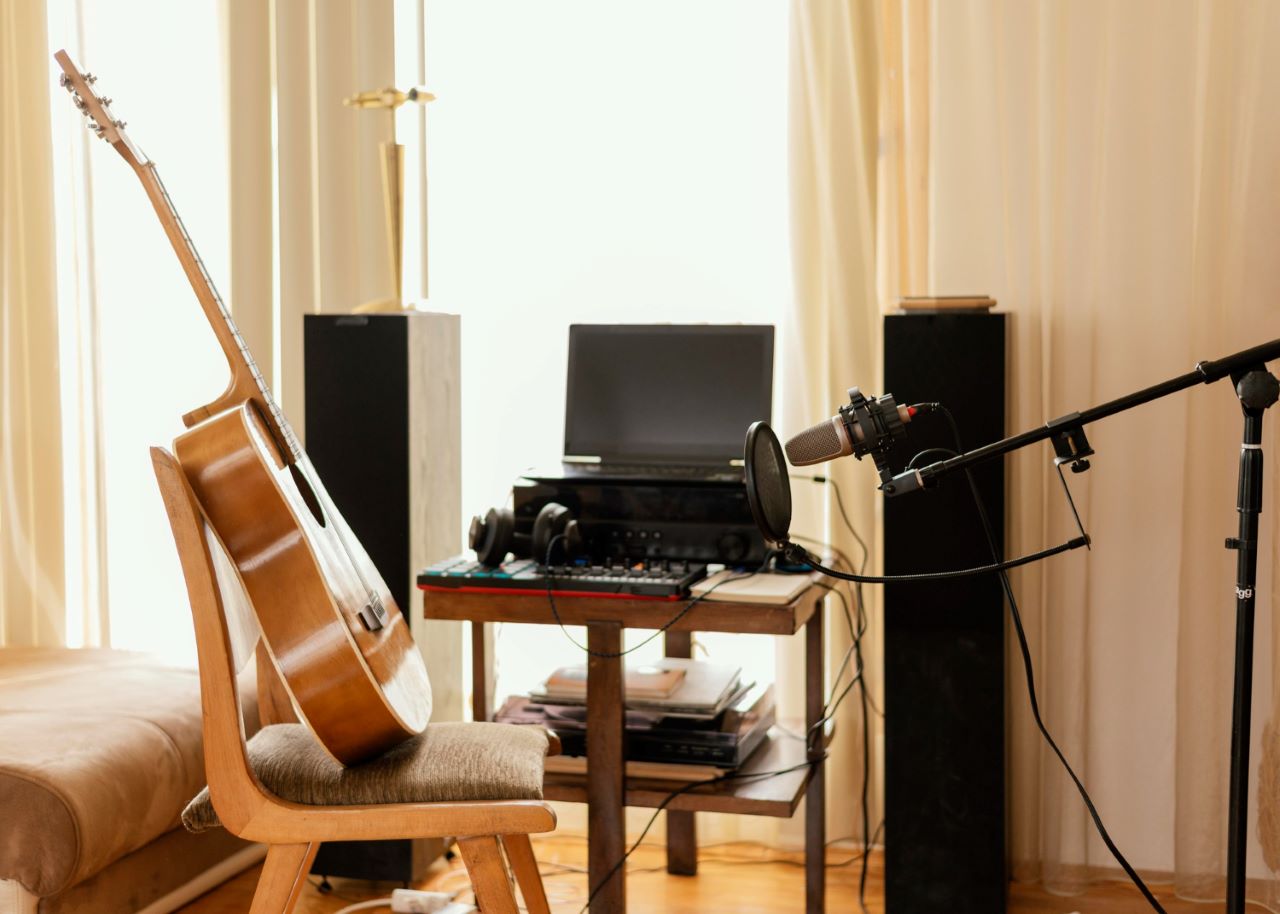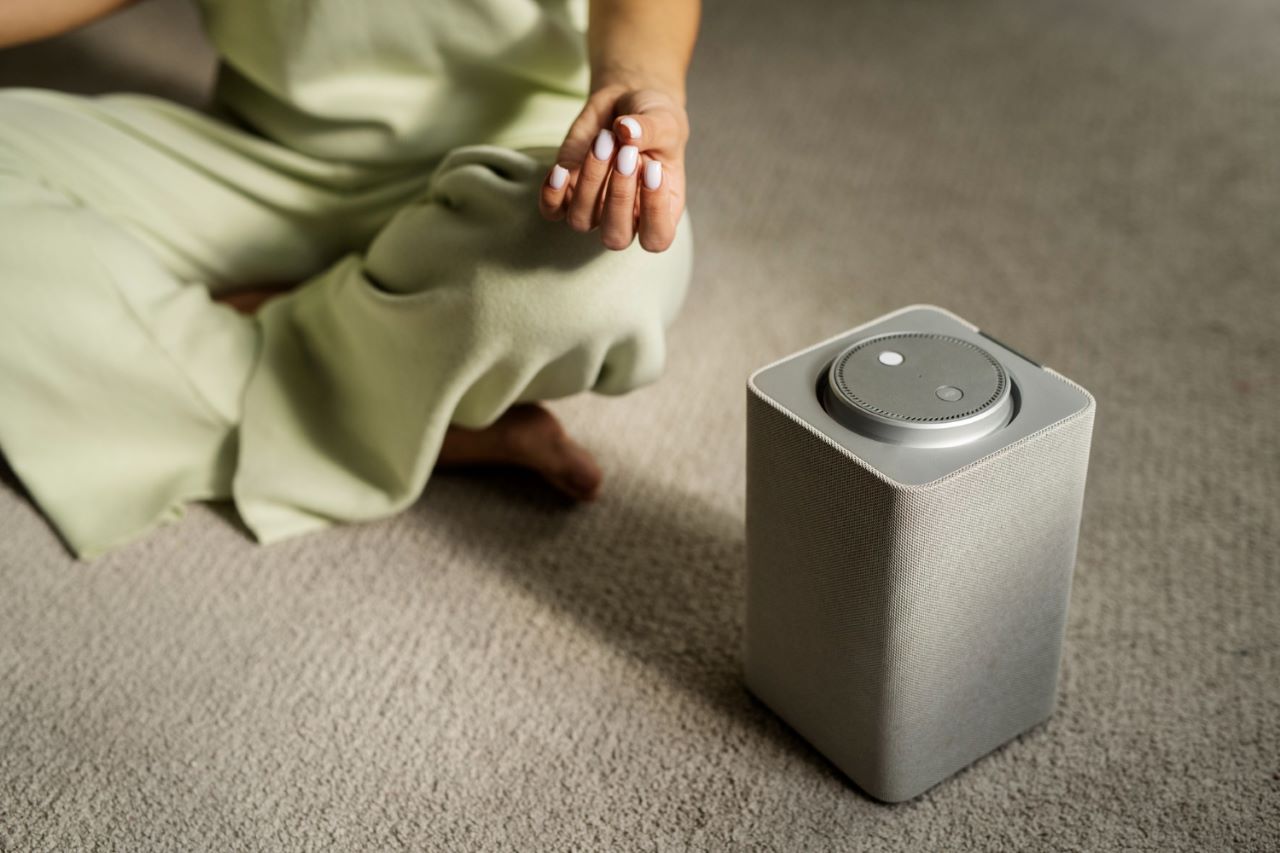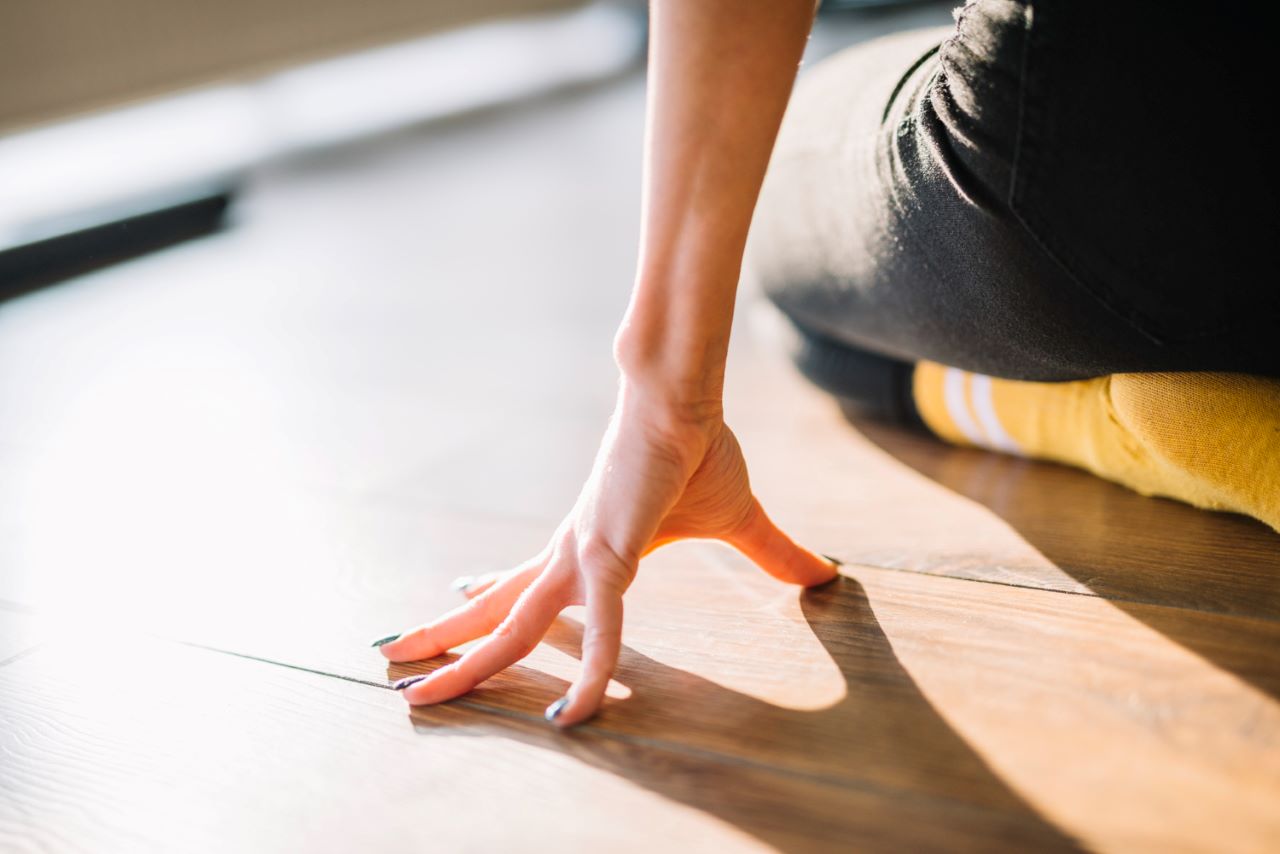Enter the world of floor soundproofing materials—a game-changer for both new construction and renovations. These materials are not just about muffling sounds; they’re about creating a sanctuary where the hustle and bustle of the outside world doesn’t intrude. Whether you’re a light sleeper, a recording artist needing pristine sound, or simply someone craving a quieter living space, the right soundproofing can make all the difference.
In this article, we’ll explore the various types of floor soundproofing materials available, delve into their specific applications, and provide practical insights to help you make an informed decision. From the plush comfort of acoustic foam to the sturdy silence afforded by mass-loaded vinyl, we’ll guide you through the nuances of each option. So, let’s step into the world of soundproofing, where every step can indeed be a silent one.
Types Of Floor Soundproofing Material
When it comes to creating a sound barrier between floors, the materials you choose are the frontline warriors in your battle against noise. Each type of soundproofing material comes with its unique properties, designed to dampen, absorb, or block noise.
The effectiveness of these materials can vary based on their composition, installation, and the type of noise you’re dealing with—be it the heavy footsteps of an upstairs neighbor or the constant hum of city traffic. Let’s briefly introduce the heroes of soundproofing before we get into the specifics.
Soundproofing Underlayment
A soundproofing underlayment is a layer of material directly placed under the finish flooring, acting as a hidden shield against noise. It’s the unsung hero that works quietly beneath the surface to provide noise reduction and also add a level of comfort underfoot.
- Acoustic Foam: Acoustic foam is designed to absorb sound waves, reducing echo and reverberation. It’s a popular choice in music studios and home theaters, where clarity of sound is paramount.
- Rubber Underlayment: Rubber underlayment, often made from recycled materials, offers a dense, durable solution that not only soundproofs but also provides a degree of thermal insulation.
- Cork Underlayment: Cork is a natural, sustainable option that not only offers soundproofing benefits but also a touch of natural warmth and cushioning.
Mass-Loaded Vinyl (MLV)

Image by Freepik
Mass-Loaded Vinyl (MLV) is the heavyweight champion in the arena of soundproofing materials. Unlike acoustic foam and cork, which primarily absorb sound, MLV works by adding mass to a structure to block sound transmission. This thin yet dense material is made by loading vinyl with barium sulfate or calcium carbonate to give it heft, allowing it to dampen noise vibrations and reduce the passage of airborne noise.
MLV is flexible and can be cut to fit various spaces, making it a versatile option for soundproofing floors. It’s typically installed between the subfloor and the finished floor, acting as a limp mass barrier that disrupts sound waves. The effectiveness of MLV is measured by its weight per square foot—the heavier it is, the better it will be at blocking sound.
In real-life applications, MLV can be a lifesaver in multi-story buildings where noise from above can be a constant annoyance. For example, in an apartment building, laying MLV beneath the flooring can help keep the sounds of upstairs neighbors’ conversations, their pets, or even their late-night dance sessions from invading your space. It’s also a popular choice in home renovations, particularly in rooms where quiet is essential, like bedrooms and home offices.
Fiberglass Insulation
Moving on to insulation materials, fiberglass insulation is commonly associated with thermal regulation, but it’s also a potent soundproofing ally. Fiberglass insulation contains tiny glass fibers that trap sound waves, dampening noise and preventing it from traveling between floors.
When used as a soundproof floor solution, fiberglass insulation is typically installed in the joist spaces beneath the subfloor. This placement allows it to absorb sound from both the room above and below, making it an excellent choice for multi-level homes or buildings. It’s also relatively easy to install and cost-effective, which adds to its appeal for both new construction and retrofit projects.
In a practical scenario, installing fiberglass insulation in the floor joists of a second-story bedroom could significantly reduce the noise coming from the living spaces below. This means that footsteps, conversations, and the sound of the television are less likely to disturb someone seeking rest or concentration in the room above.
Mineral Wool Insulation

Image by Freepik
Mineral wool insulation, also known as rock wool insulation, is another insulation material that excels in soundproofing. Made from natural minerals like basalt or slag, this material has a denser structure than fiberglass, which makes it even more effective at blocking and absorbing sound.
Like fiberglass, mineral wool is installed in the joist spaces and is particularly effective at reducing the transmission of lower-frequency sounds, which are often the most difficult to control. It’s also fire-resistant and can help to improve the overall fire rating of a floor assembly.
For homeowners living near busy streets or in noisy urban environments, installing mineral wool insulation can provide a noticeable reduction in the intrusion of external noises, such as traffic or construction work, leading to a more peaceful and quiet interior space.
Resilient Channels And Clips
Resilient channels and clips are part of a system designed to decouple a floor or ceiling from its structure, significantly reducing the transmission of sound. These metal channels are installed perpendicular to the floor joists, creating a floating floor effect. This separation prevents sound waves from traveling through solid materials, like wood or concrete, and into the space below.
In a real-world setting, resilient channels and clips can be particularly effective in a home recording studio, where preventing sound leakage is crucial. By installing these channels, the impact of vibrations from musical instruments or speakers on the floor is minimized, preserving the purity of the recordings and preventing disturbance to rooms below.
Soundproofing Mats And Pads
Lastly, soundproofing mats and pads are a straightforward solution for reducing footfall noise and enhancing the acoustics of a room. These are often made from dense materials like vinyl or polyurethane and can be placed under carpets or flooring materials. They’re not only effective at dampening noise but are also easy to install, making them a popular choice for both residential and commercial applications.
In a busy office environment, for example, soundproofing mats can reduce the noise of constant foot traffic, rolling chairs, and dropped objects, contributing to a more focused and productive workspace.
Factors To Consider When Choosing Soundproofing Materials

Image by Freepik
For podcasters, the quest for the perfect soundproofing setup is not just about reducing noise; it’s about creating a pristine audio environment where every spoken word is captured with clarity and nuance. When selecting soundproofing materials, there are several critical factors to consider that will affect the quality of your recordings. Let’s explore these factors to ensure your podcasting space is acoustically optimized.
Sound Transmission Class (STC) Ratings
The Sound Transmission Class (STC) rating is a crucial metric for podcasters to understand. It measures how well a partition attenuates airborne sound, with higher numbers indicating better performance. In the context of podcasting, where even a slight background noise can be picked up by sensitive microphones, choosing materials with a high STC rating can be the difference between amateur and professional-sounding recordings.
Materials with an STC rating of 50 or above are considered excellent at soundproofing, but even those in the 40-50 range can significantly reduce common noises such as loud conversations or traffic. For instance, a podcaster living in a busy urban area might opt for MLV with a high STC rating to prevent city sounds from infiltrating the recording space.
Impact Insulation Class (IIC) Ratings
While STC ratings focus on airborne sound, the Impact Insulation Class (IIC) rating measures a material’s ability to block impact noise—like footsteps or moving furniture. This is particularly important for podcasters who record in multi-level buildings where overhead noise can be disruptive.
An IIC rating of 50 is the minimum standard for residential buildings, but podcasters should aim for materials with higher ratings for added protection. Rubber underlayment, for example, with a high IIC rating, can be a boon for a podcaster whose studio is beneath a high-traffic area, ensuring that the thumps and thuds of passing footsteps don’t make it into the final cut.
Material Thickness And Density
The thickness and density of soundproofing materials are directly related to their ability to block and absorb sound. Thicker and denser materials will generally offer better soundproofing qualities, which is essential for podcasters who require a dead-sound environment.
For example, thick acoustic foam panels can be used to line the walls of a podcasting studio, effectively absorbing echoes and reverberations that can degrade audio sound quality. Similarly, dense fiberglass or mineral wool insulation in the floor can prevent sound transmission from below, ensuring that the only voice being recorded is the one behind the mic.
Floor Type And Structure

Image by Freepik
The type of floor and its structure can greatly influence the choice of soundproofing materials. A concrete floor, for instance, may transmit less sound compared to a wooden floor but may still require a layer of soundproofing to address impact noise. Podcasters must assess the existing floor structure to determine the most effective soundproofing strategy.
For a podcaster working in a room with a wooden floor, resilient channels and clips can be installed to create a floating floor that significantly reduces sound transmission. This can be critical for maintaining the integrity of the audio in professional podcast production.
Budget And Cost-Effectiveness
Finally, budget is a practical consideration that can’t be ignored. Podcasters need to balance the cost of soundproofing materials with their effectiveness. While it may be tempting to go for the highest-grade materials, there are cost-effective solutions that can still provide excellent soundproofing.
For instance, combining materials like MLV for blocking airborne noise with a layer of rubber underlayment for impact noise can be a budget-friendly solution that doesn’t compromise on quality. Podcasters should also consider the longevity and durability of materials, as a higher upfront cost might lead to long-term savings by reducing the need for replacements or upgrades.
Final Thoughts
Soundproofing is not just a technicality; it’s an integral part of the storytelling process. By carefully selecting the right floor soundproofing materials, considering STC and IIC ratings, and understanding the interplay between material density, floor structure, and budget, podcasters can craft a space that is acoustically tailored to their needs.
Remember, the goal is to control the sound energy in your space so that your voice carries with the intention and emotion you’ve woven into it without the distraction of unwanted noise. Whether you’re a seasoned podcaster looking to upgrade your studio or a newcomer setting up your first recording space, the materials you choose are the silent partners in your creative process. They are the unseen difference between a good podcast and a great one.
As you embark on this journey of creating your ideal recording environment, let the knowledge of soundproof floors materials empower you. With the right choices, your studio will not only be a haven of quiet but also a crucible of creativity, where your voice is the clear and undisputed centerpiece. In the end, the stories you tell deserve the best possible platform to be heard, and that starts from the ground up.